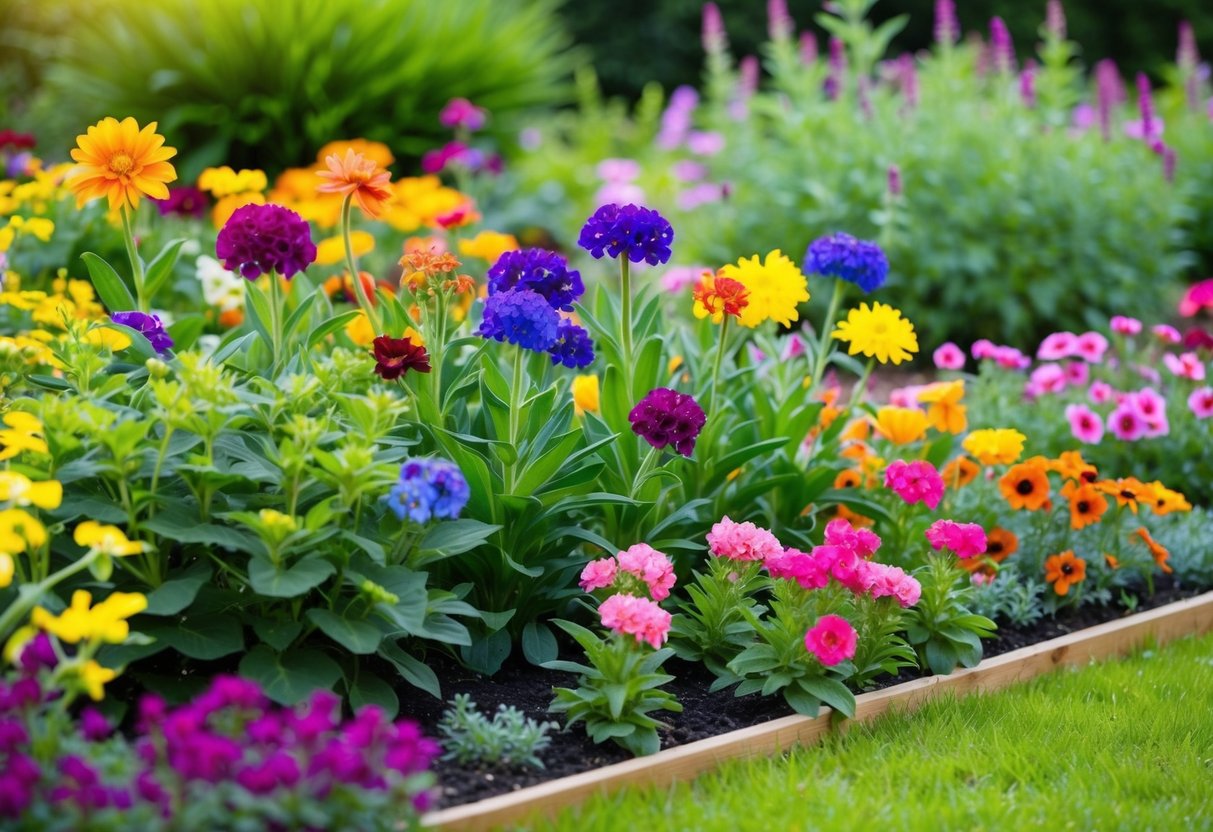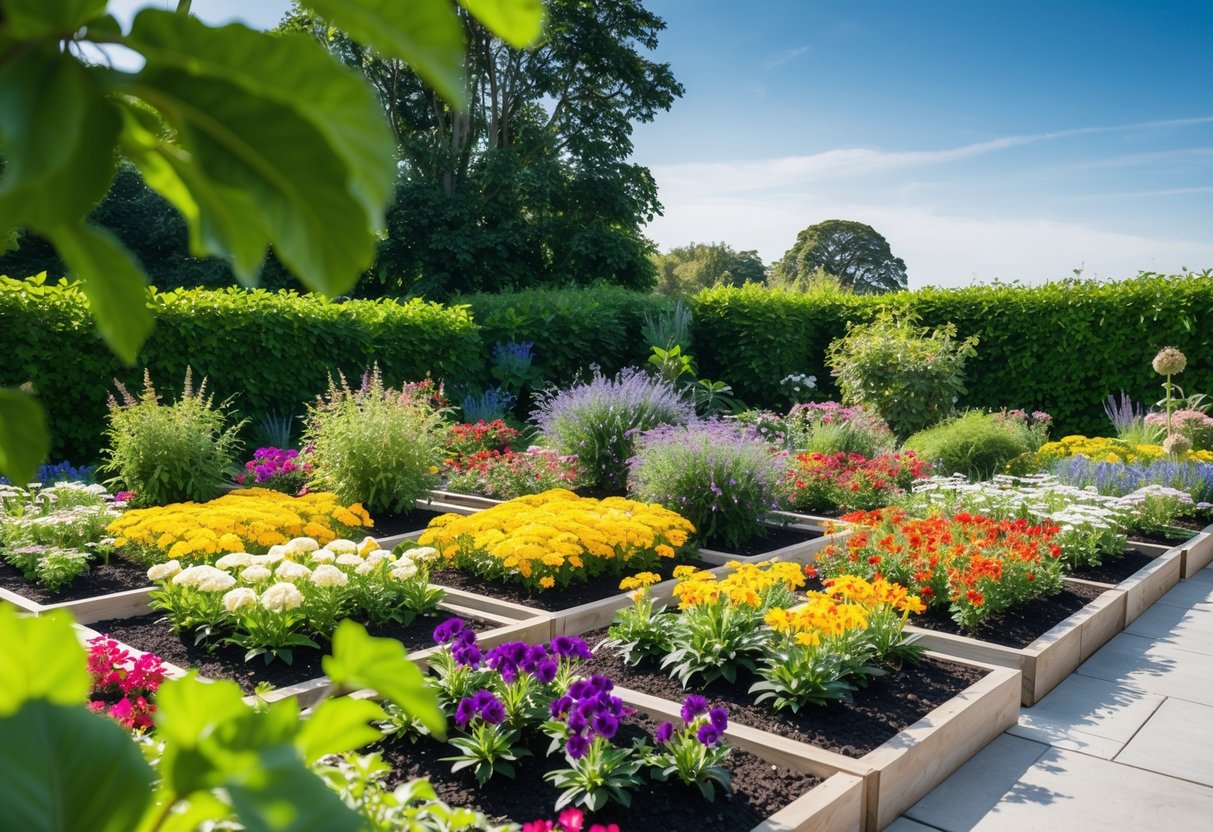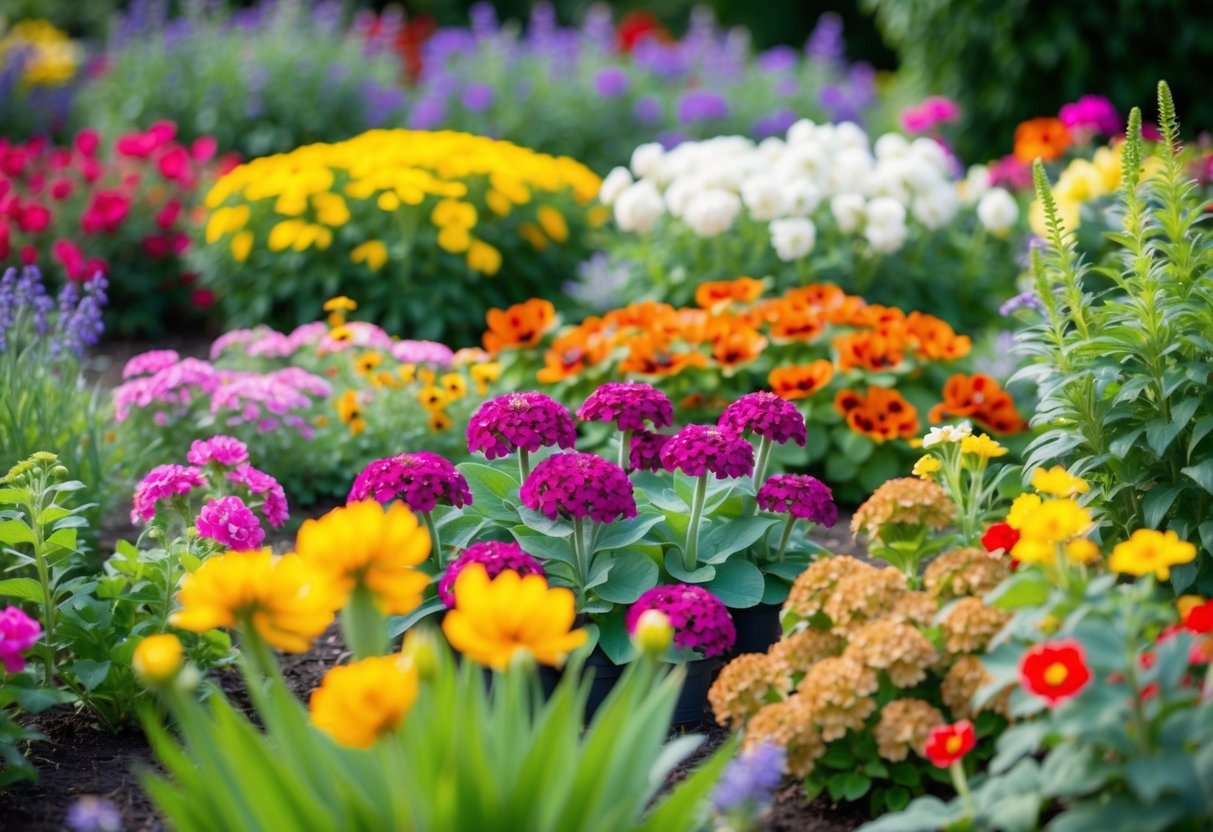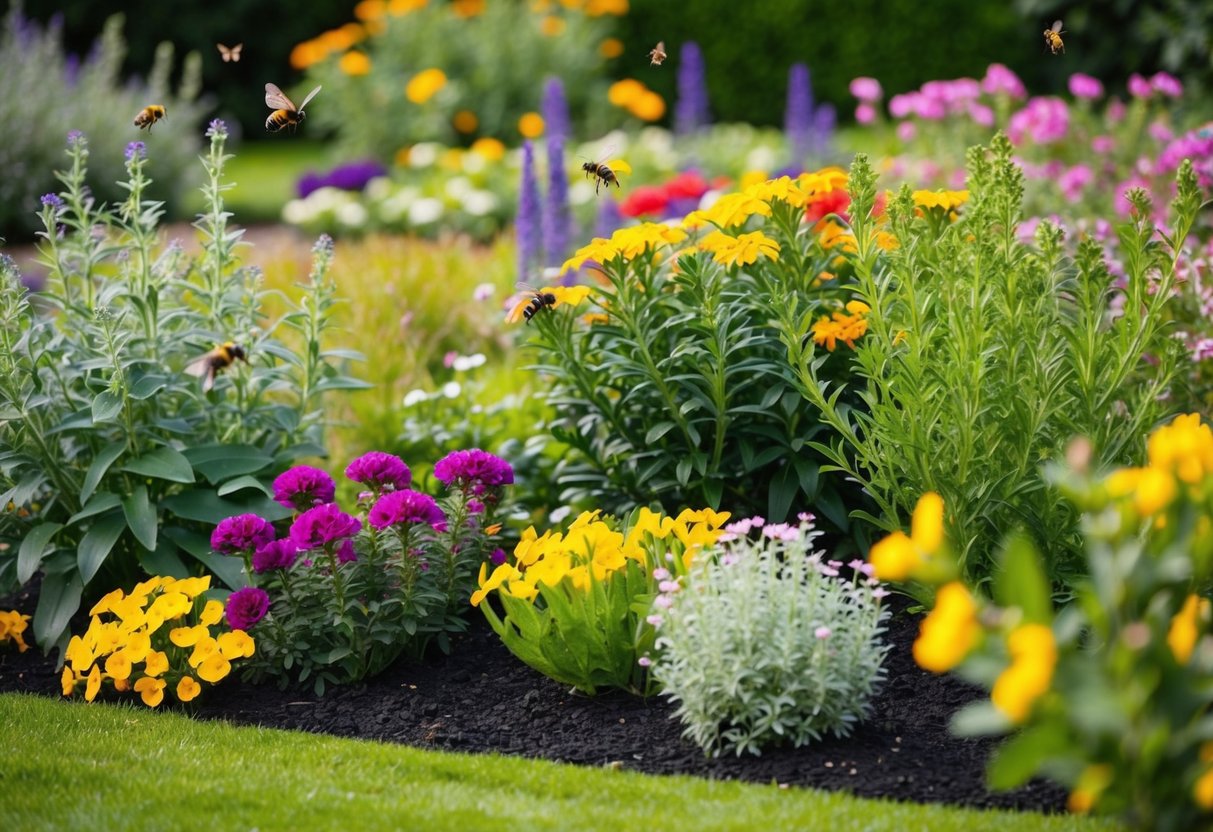Do Annual Bedding Plants Grow Back Every Year? Understanding Their Lifecycle
When planning your garden, you might ask yourself: do annual bedding plants grow back every year? The answer is no; annual bedding plants live for just one growing season. This means they don’t return the next year on their own. Their beauty shines during that single season, offering vibrant colors that can transform any garden space. While they need to be replanted annually, their variety allows you to experiment with different looks each year.

Perennials, on the other hand, are your garden’s steadfast friends. These plants come back year after year and require less maintenance over time. Having a blend of both annuals and perennials can offer the benefits of newness and consistency, ensuring your garden always has something going on.
Welcome the endless possibilities of gardening by understanding the best use of each plant type. Whether you adore the ever-changing nature of annual bedding plants or the reliable return of perennials, your garden is a space where creativity meets nature. Dive into the world of gardening with confidence and discover what’s best for your outdoor haven.
Understanding Plant Lifecycles

Plants can be categorized based on how long they live. Knowing the differences between annuals and perennials helps you make better choices for your garden. This section will explore the lifecycles of these plants, so you know what to expect each year.
Annuals vs Perennials
Annuals complete their lifecycle in a single growing season. You plant them in spring or summer, and by the end of the season, they have grown, bloomed, produced seeds, and died. Popular choices include marigolds and petunias. They won’t come back unless you replant them. Some annuals might seem to reappear because they drop seeds that germinate the next year. This can happen naturally in certain climates, especially in USDA growing zones.
Perennials, on the other hand, come back year after year. They survive through the winter, thanks to their root systems, and sprout new growth each spring. These plants tend to require less effort in replanting, making them a stable choice for your garden. While annuals provide quick and vibrant blooms, perennials offer longevity. This can be beneficial when planning your garden’s look and feel over several years.
The Life Cycle of Bedding Plants
Bedding plants include both annuals and perennials.
Annual bedding plants, like zinnias and pansies, follow the short, one-season lifecycle. They are excellent for adding bursts of color and are usually replaced once they complete their cycle. If you want fresh blooms each year, you’ll need to plant new seeds or seedlings in your beds.
For perennial bedding plants, their lifecycle extends over multiple years. They require less frequent planting. Their roots stay alive underground during the winter, helping them emerge in the spring. These types of plants can be more cost-effective over time since you don’t need to buy new plants every season. Such plants are particularly beneficial for gardeners in varying USDA growing zones, as they adapt to different climate conditions.
Selecting the Right Plants for Your Garden

When planning your garden, it’s important to choose plants that will thrive in your environment. Annual bedding plants bring bursts of color, while perennials offer lasting beauty and support biodiversity.
Annual Bedding Plant Varieties
Annual flowers can give your garden a fresh and vibrant look each year. They complete their life cycle in one growing season, offering showy blooms for a season. Popular options include marigolds, petunias, and zinnias. These plants are perfect for adding splashes of color to your garden and are often favored in landscaping due to their long blooming period.
When selecting annuals, consider how much sunlight your garden receives. Look for plants that thrive in full sun if that is your condition.
Annuals are great for attracting pollinators like bees and butterflies. You can mix different colors and textures to create exciting combinations that change each season. Check out examples of beautiful annual flower bed combinations for inspiration.
Perennial Plants and Their Advantages
Perennial flowers, such as daylilies, roses, and lupines, come back year after year, providing lasting beauty and structure to your garden. These hardy plants often require less maintenance once established, making them a practical choice for gardeners looking for longevity. They can bring vibrant flowers to your garden and continue to attract pollinators.
Perennials are a great addition to support biodiversity in your garden. You can mix and match flowering perennial plants to create a harmonious landscape. In addition to their aesthetic appeal, some perennials can also serve as food sources for bees and birds. Explore the benefits of incorporating different perennial plants to improve your garden’s overall health and diversity.
Caring for Bedding Plants

Providing proper care to your bedding plants ensures they remain healthy and vibrant throughout their lifecycle. These plants often require specific watering and feeding routines and can thrive or struggle based on the sunlight and shade they receive.
Watering and Feeding
Proper watering is crucial for bedding plants. You should water regularly, especially during hot weather, as many are not heat-tolerant.
Aim to keep the soil moist, but not waterlogged, to prevent root rot. Using compost can help retain moisture in the soil and provide essential nutrients.
Feeding your plants with a balanced fertilizer every few weeks supports healthy growth. It is especially beneficial during bloom time, when plants need extra nutrients to support flowering. Be sure to follow the instructions on the fertilizer package to avoid overfeeding, which can harm the plants.
Managing Sunlight and Shade
Bedding plants have different needs when it comes to sunlight and shade. Knowing the requirements of your specific plants is important.
Some plants thrive in full sunlight, while others prefer partial or full shade.
For sun-loving plants, make sure they receive at least 6 to 8 hours of direct sunlight each day. If your plants are more shade-tolerant, positioning them where they get filtered sunlight or shade can prevent them from wilting in the heat.
Always consider the growing season and be prepared to move or shade plants if the sun becomes too intense. This approach helps you create an ideal environment for your plants to flourish.
Designing with Bedding Plants

Designing with bedding plants can add vibrant color and variety to your garden or landscape. You’ll explore how to create visually appealing layouts and consider seasonal timing to maximize your garden’s beauty.
Creating Colorful Layouts
When designing with bedding plants, mix colors to create lively and eye-catching arrangements. Combining complementary colors like red and green or blue and orange can make each hue pop.
You might consider arranging your plants in groups to emphasize color themes or create gradients for a subtle effect.
In mixed flower beds, use a variety of plants to add depth. Pair tall, airy blooms with low-growing border plants to create layers. Mixing plant heights adds movement, while contrasting textures provide visual interest. Hanging baskets can offer dramatic splashes of color and vertical appeal.
Consider using annuals and perennials together. Annuals offer bold, seasonal color, while perennials provide a stable foundation year after year. This approach creates a balanced, low-maintenance garden that remains engaging through different seasons.
Seasonal Considerations for Planting
Timing is crucial when planting bedding plants. Annuals are perfect for quick, vibrant displays, but they usually die after a season. Therefore, you’ll want to plan the planting around your local frost dates to ensure a full season of blooms.
Each type of plant has its preferred growing conditions. For example, some prefer full sun, while others thrive in partial shade. Knowing these preferences helps select the best spot in your garden for each plant.
Grouping plants with similar needs together in your landscape creates a healthier and more resilient garden.
Consider seasonal transitions, too. As one type of plant fades, others can take its place, ensuring your garden stays colorful year-round. By planning ahead, you can seamlessly move from spring blooms to summer vibrancy and into autumn tones.
Maintaining a Healthy Garden Ecosystem

Building a thriving garden is about more than just planting flowers. It’s essential to attract pollinators and select plants that will last and support the environment.
Encouraging Pollinators and Biodiversity
Pollinators like bees and butterflies are vital for a flourishing garden. They help plants reproduce by transferring pollen.
You can encourage them by planting a variety of flowers that bloom at different times of the year. Native plants are often best since they naturally attract local wildlife.
Avoid using pesticides as they can harm these helpful creatures. Instead, consider natural alternatives to manage pests.
Adding a small water feature, such as a birdbath, can also attract more pollinators to your garden. It’s important to provide shelter as well. Simple structures or even overgrown plants can give these insects a place to rest.
Choosing Evergreen and Hardy Perennials
Evergreen perennials are excellent choices for maintaining a lush garden. They offer year-round greenery, adding texture to your outdoor space. These plants don’t lose their leaves in winter, so your garden will remain lively even in cold months.
Hardy perennials are another great option. They can withstand harsh weather and return stronger each year. Some popular hardy perennials include hostas and hydrangeas. These plants require less maintenance, reducing your gardening workload.
When selecting plants, pay attention to their sun and water needs. Grouping plants with similar requirements makes care easier and increases their chance of thriving. This thoughtful approach helps you create a robust and sustainable garden ecosystem.







